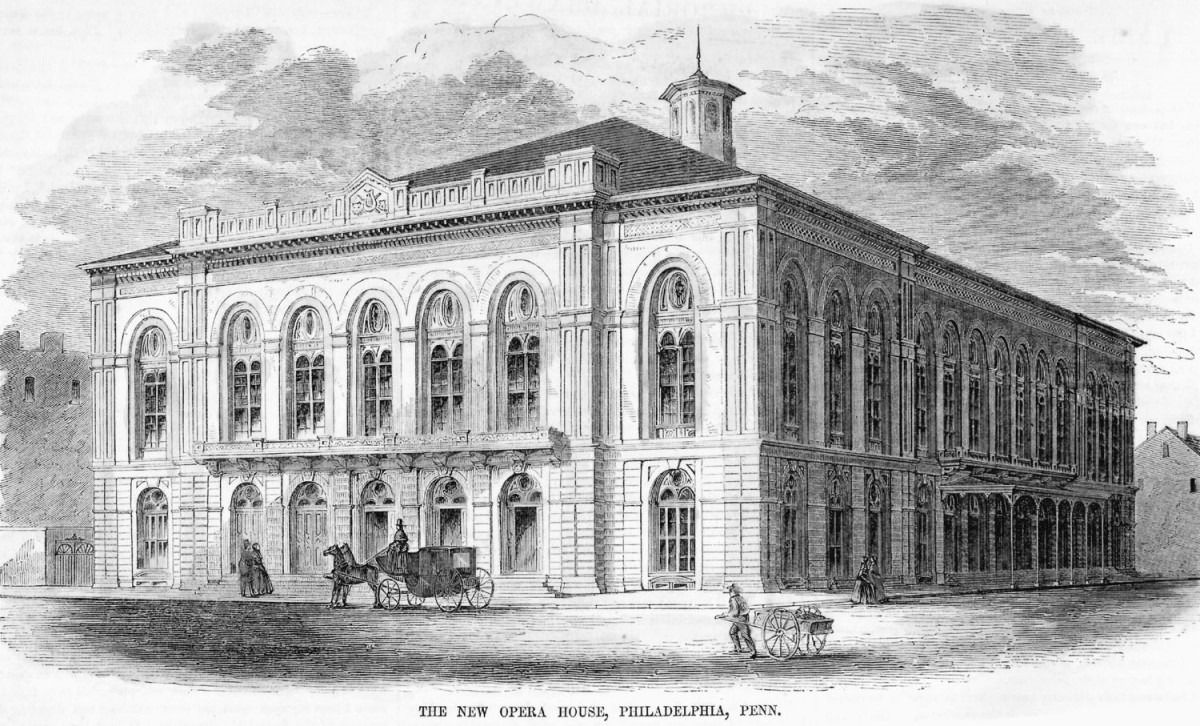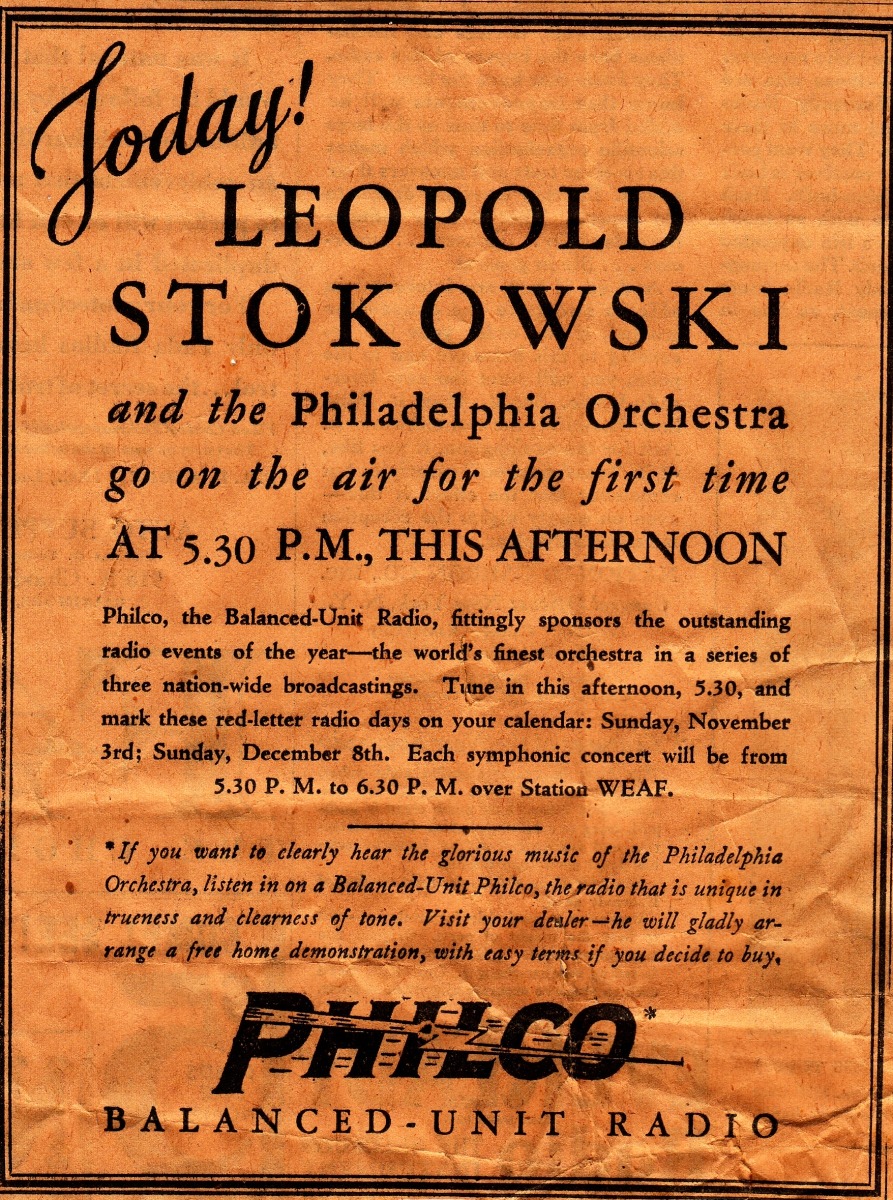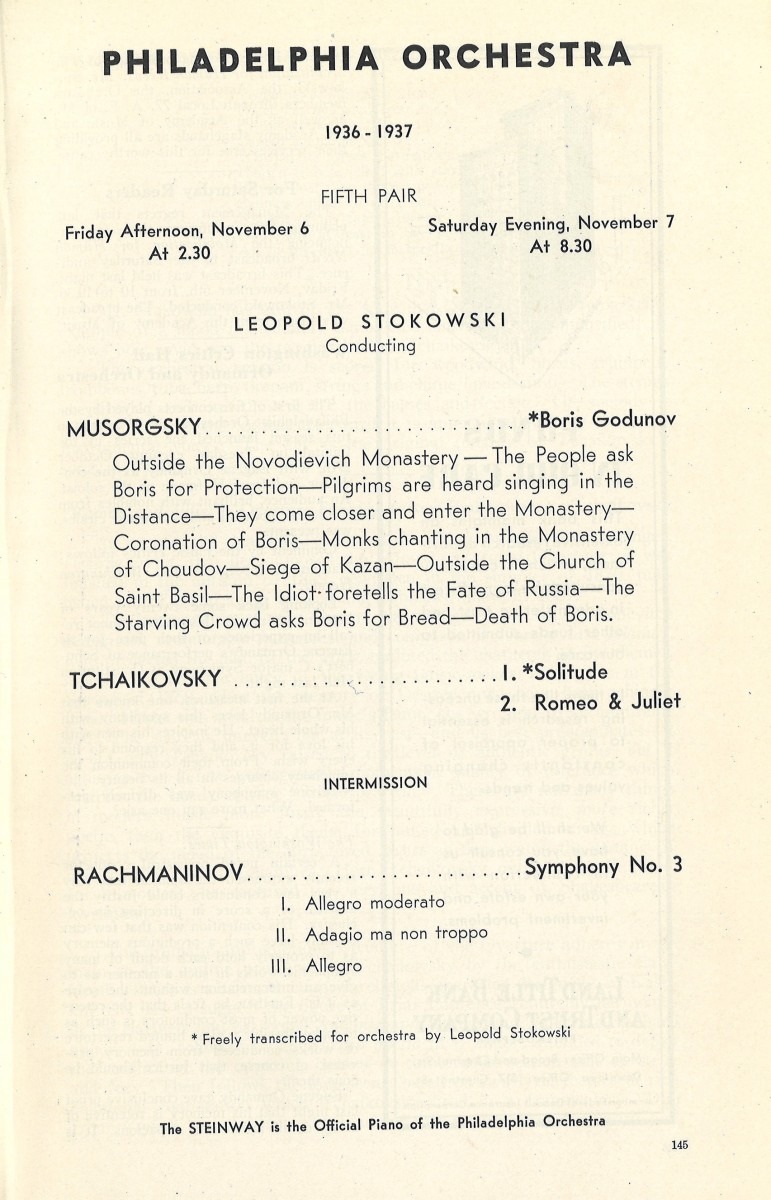This week, The Philadelphia Orchestra returns to the Academy of Music for its first subscription concerts since moving to Verizon Hall in 2001. To celebrate the Orchestra’s rich history with the Academy, its home for over a century, as well its exceptionally close creative relationship with pianist/composer Sergei Rachmaninoff, whose Third Symphony is featured on the program, there will be a display of relevant historical materials in the Academy lobby. Curated by the Orchestra’s consulting archivist, Jack McCarthy, the exhibit will feature items drawn from the extensive collections of the Philadelphia Orchestra and Academy of Music Archives.

An engraving from an 1857 Harper's Weekly of the Academy of Music at its opening.
Opened in 1857, the Academy of Music is the oldest opera house in continuous use as such in the United States. On display in the exhibit, along with other Academy archival items, will be an original invitation and ticket to the building’s opening event, the first Academy of Music Concert and Ball, held on January 26, 1857. The 163rd Academy Anniversary Concert and Ball will be held on Saturday, January 25.

Philco advertisement for The Philadelphia Orchestra's 1929 national radio broadcasts from the Academy of Music. Philadelphia was the first American orchestra to be heard on a nation-wide, commerically sponsored radio broadcast.
The Academy of Music became the home of The Philadelphia Orchestra upon the latter’s founding in 1900. Over the next century the Orchestra produced a number of groundbreaking events in the building, events that represent major artistic and technological milestones in American musical history. One such event that will be highlighted in the exhibit is the Orchestra’s series of three national radio broadcasts from the Academy in the fall of 1929, the first nation-wide, commercially sponsored radio broadcasts of a symphony orchestra in US history. The display will include original behind-the-scenes correspondence between the Orchestra’s celebrated music director, Leopold Stokowski, and its manager, Arthur Judson, then one of the most powerful figures in concert music, regarding programming for the series. Stokowski wanted to include Igor Stravinsky’s The Rite of Spring, still a relatively new and challenging piece at that time. (Stokowski and the Philadelphians had given its US premiere in 1922 and made the first American recording of it in September 1929, both in the Academy.) Judson thought The Rite of Spring would alienate much of the national radio audience. Stokowski agreed that many listeners would have trouble with the piece, but held firm. The Rite of Spring was included in the second of the three broadcasts on November 3. Audience reaction was decidedly mixed.

Program from the 1936 world premiere of Rachmaninoff's Symphony No. 3.
Sergei Rachmaninoff considered The Philadelphia Orchestra the greatest orchestra he had ever heard and said that it was the unique Philadelphia sound he had in mind while composing symphonic music. He often worked with longtime music directors Stokowski and Eugene Ormandy in fine tuning compositions as they neared completion, and the two conductors gave the world premieres of many Rachmaninoff compositions with the Philadelphians. Among the historical items in the exhibit will be a copy of a July 1936 letter from Rachmaninoff to Ormandy requesting help with string bowings in a new work Rachmaninoff was then finishing, his Third Symphony. Stokowski and The Philadelphia Orchestra gave the piece’s world premiere on November 6, 1936, in the Academy. Attendees at the upcoming concert series will have the rare opportunity to hear the Symphony in the venerable building and with the renowned Orchestra that first presented it to the world over 83 years ago.